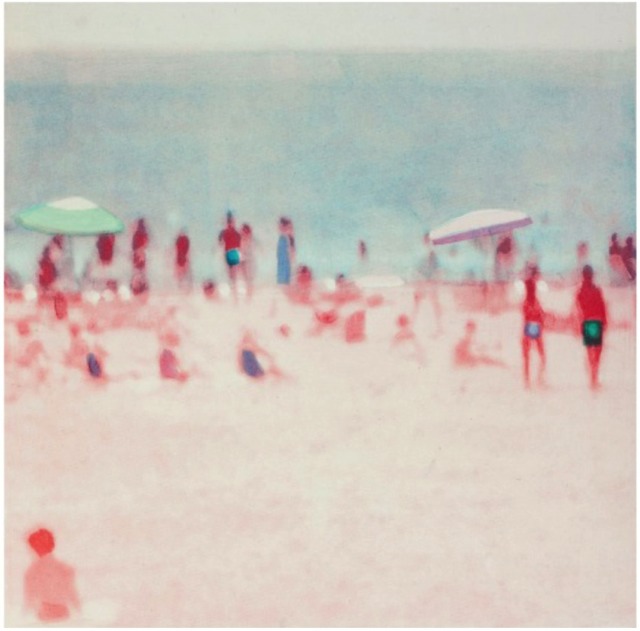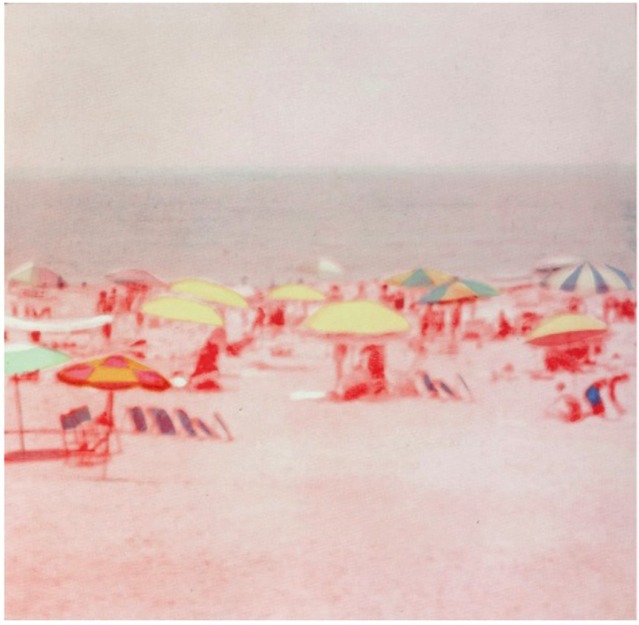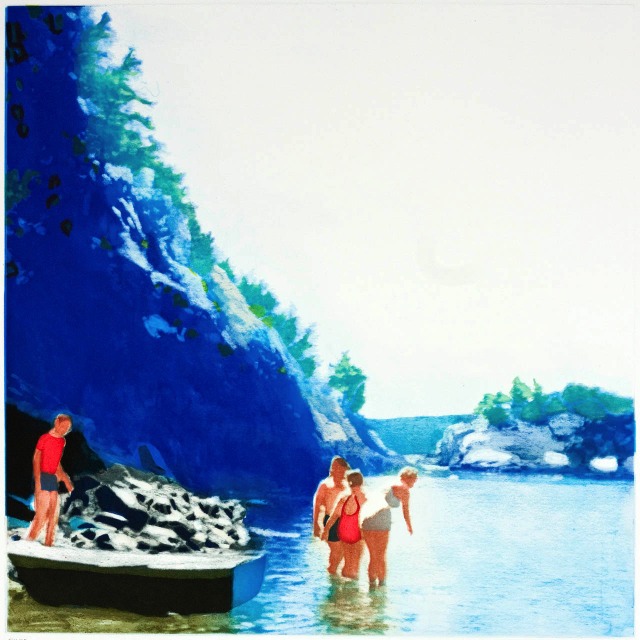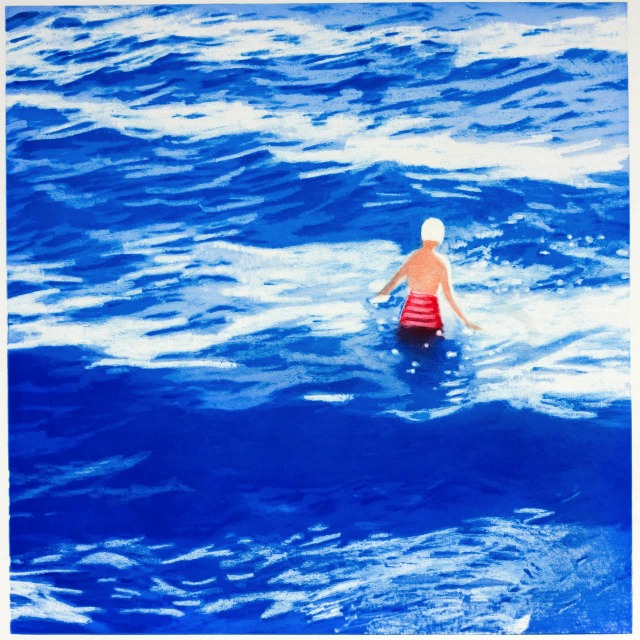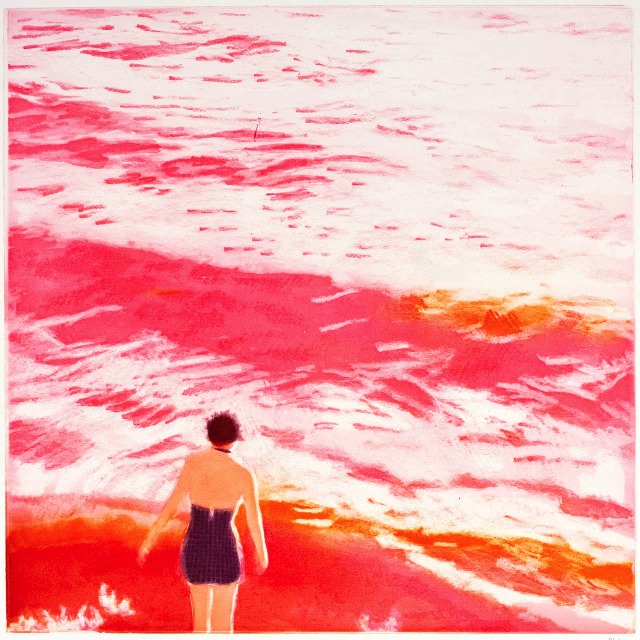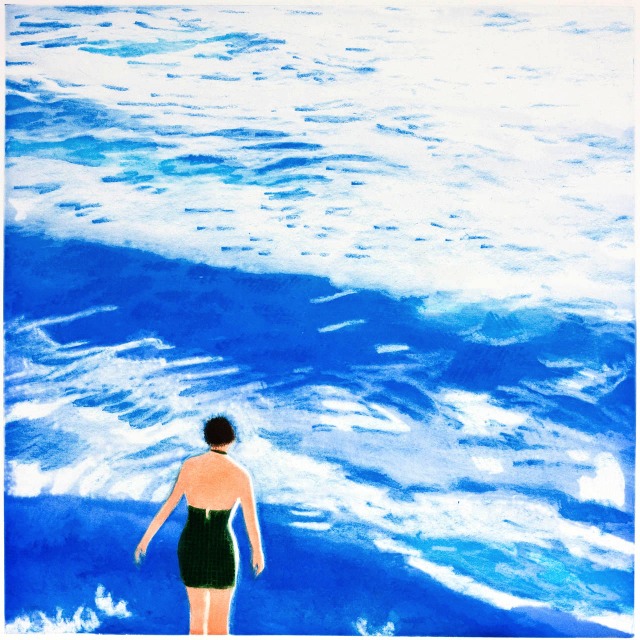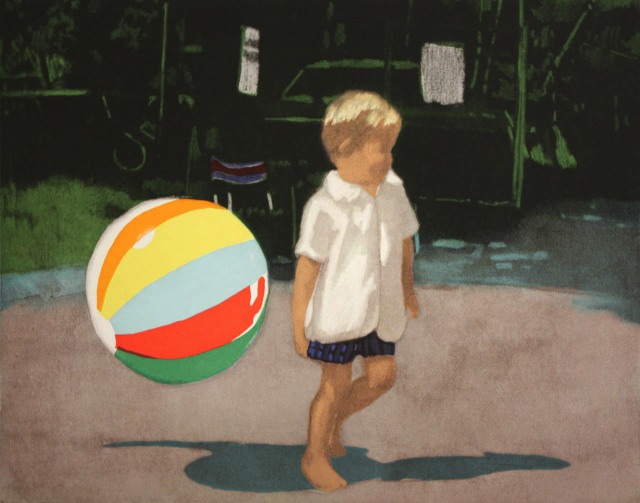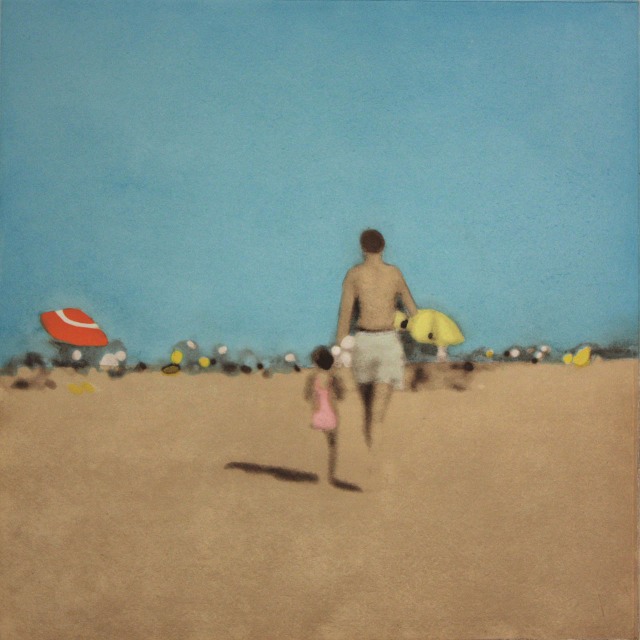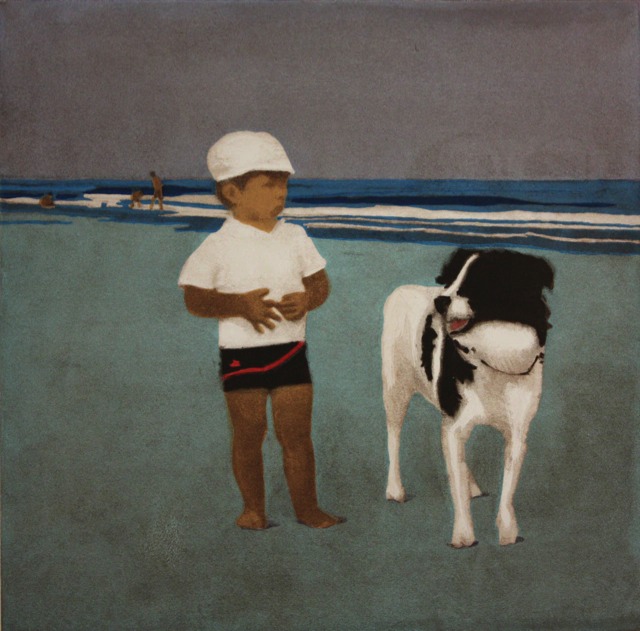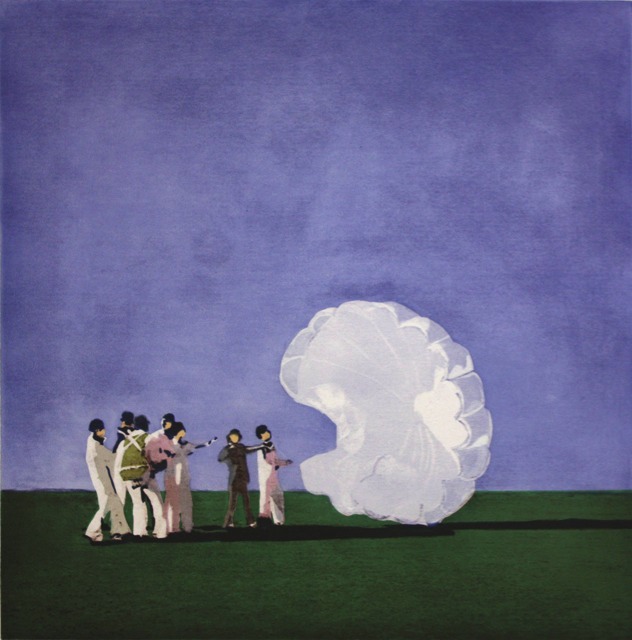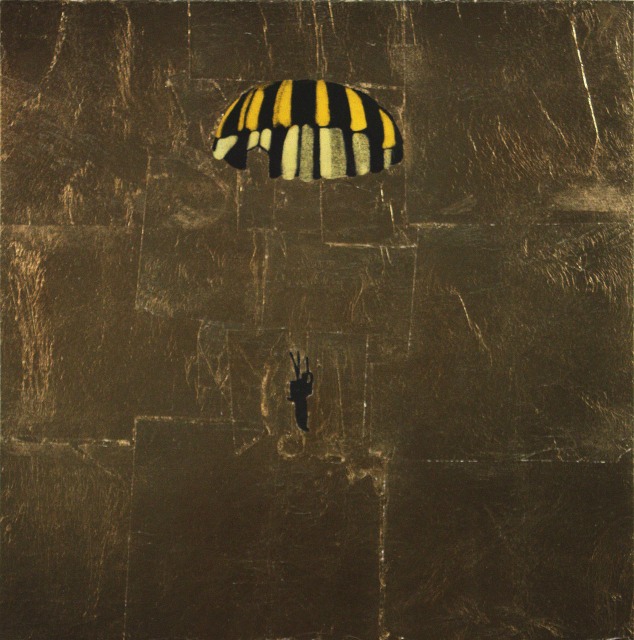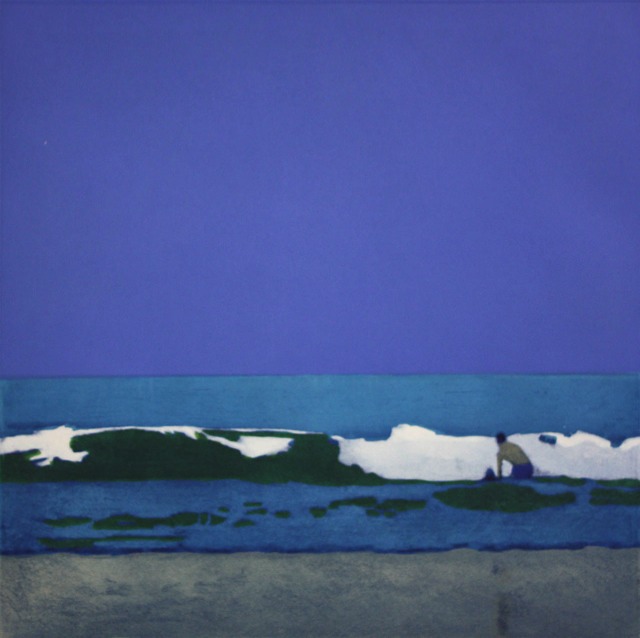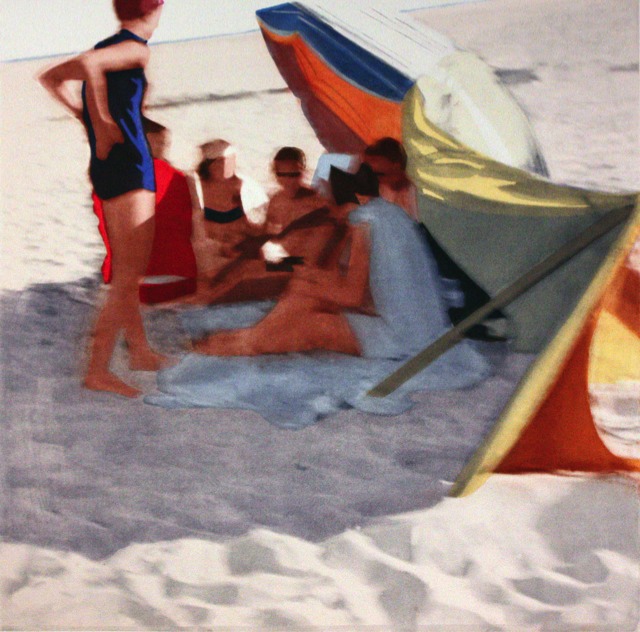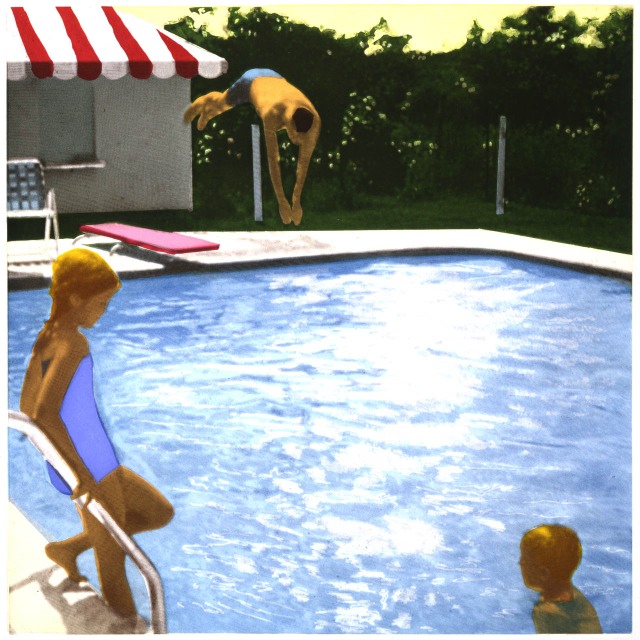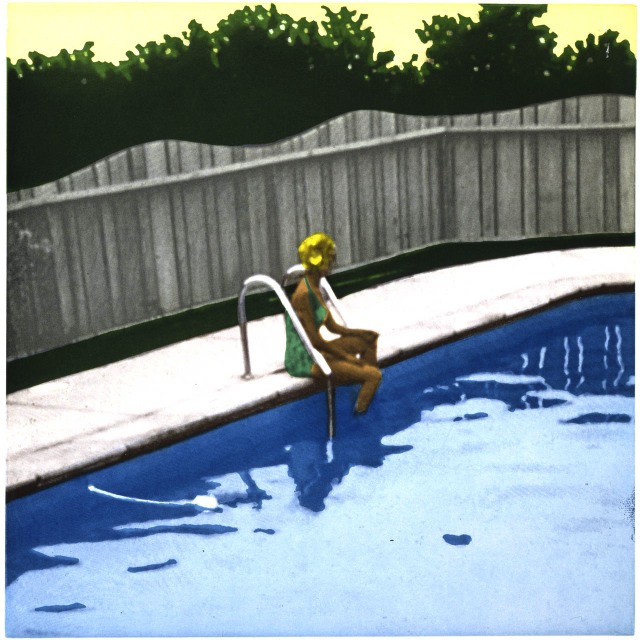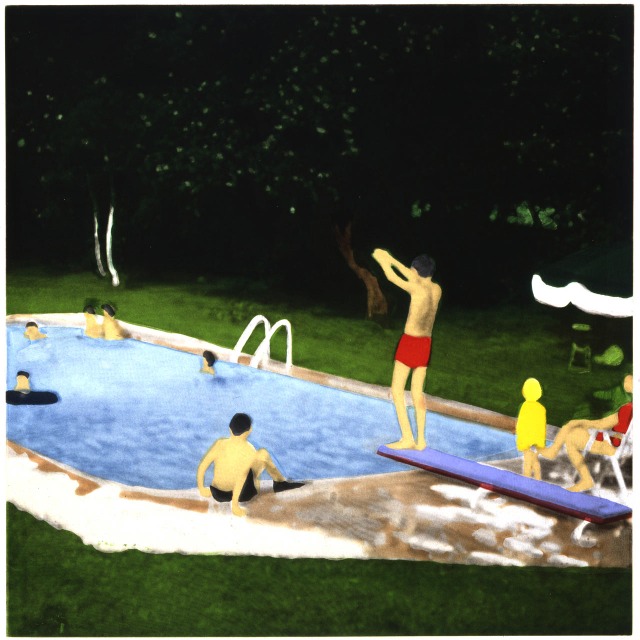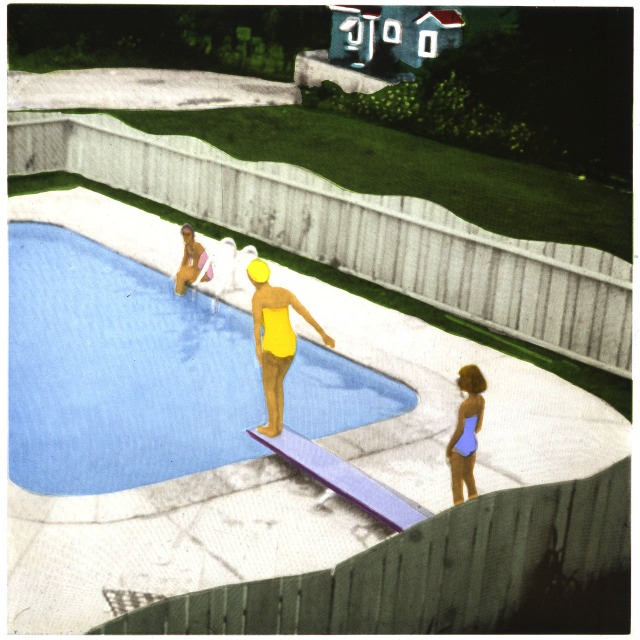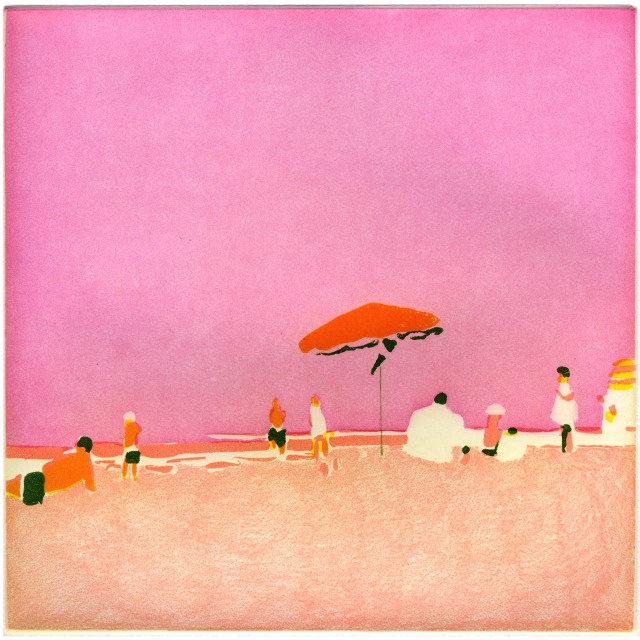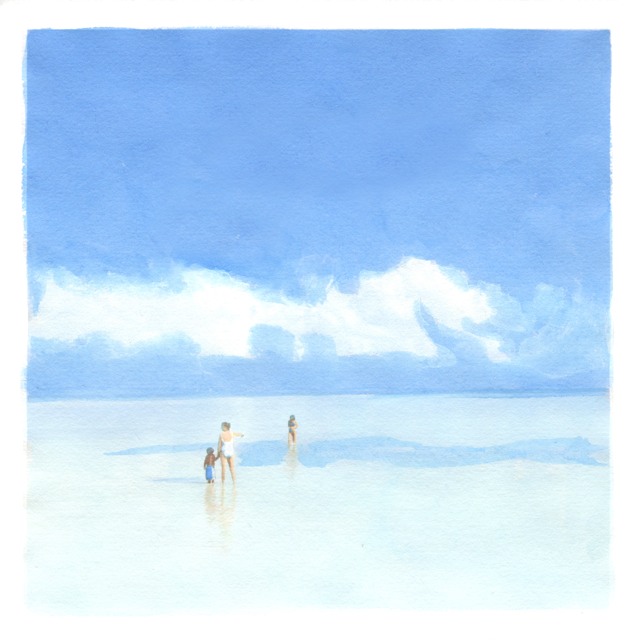Wildwood (Detail II)
2014
Direct to plate
photogravure and aquatint
Somerset white paper and gampi
Image size 14″ x 14″
Paper size 18 3/4″ x 18″
Edition of 35
Isca Greenfield-Sanders looks for just the right discarded slide. One image taken in 1961 at the Jersey shore has provided her inspiration for several paintings and three new prints with Paulson Bott Press. As she focuses her attention closer and closer the image moves from a dreamy memory to an abstract dream. –Kenneth Caldwell
[read more=”Click here to Read More” less=”Read Less”]
Paulson Bott Press: Where did the images for these prints come from?
IGS: All three etchings are based on one slide taken in 1961 at the beach in Wildwood, New Jersey. The original slide is bright and packed with figures – I fell for it immediately. I have made more than 10 oil paintings/studies, and now 3 etchings all based on this one image. For these three etchings, I chose several increasing croppings of the image to give the sense of movement through the image. The first etching is approximately a quarter view of the full panorama, the second etching about an eighth, and the third etching about a sixteenth of the full image. So as viewers, we are zooming in tighter and tighter. When we really dig in there, everything begins to fall apart and become totally abstract. Figures are melting away, and we see colors dotting the horizon line. It is one stroke that makes a figure, one stroke that makes an umbrella. They are impressions of color and figure.
Q: What is it about the 1950s and 1960s that you are drawn to?
IGS: I have many reasons that I have focused on images from those two decades, one is that I like the film stock. Dyes and film stock changed in the 1970s. Cameras got a little bit better and film got a little bit better, so that you could shoot indoors more accurately. Unfortunately for me, as a landscape painter, people went inside more in the 1970s and shot these horrible interior photographs. But up to the late 1960s, because they were hamstrung by the cameras and by the film speeds, they shot outside. So if you wanted to take a portrait of your family at a graduation or some backyard picnic or some sort of watershed moment (even if you didn’t realize it was one) you went outside to do it, because it was more likely that the photo would come out.
Q: Talk a little about how you accomplish these prints technically.
IGS: Renee, Pam and I chose three oil paintings on paper from my recent exhibition at John Berggruen Gallery. Pam and Renee created photogravure key plates based on those paintings. In addition, they made a second set of matching photogravure key plates of the original photograph. We did this so the first set of plates would give us the feel of the paintings and the second set would give us a photo feel, much like my hybridized paintings. Along the way we added numerous other plates for color and texture.
Q: How are the prints different from the paintings?
IGS: The paintings are a starting point. You can’t build an etching the same way you can a painting. Painting is an additive process, you can just keep going and the order of things is not quite as critical. Etchings are not made that way. I think you may have to be smarter to make etchings! Perhaps that is why one needs a whole team of people to make etchings! I think it’s a mistake to come in and think that there’s going to be a one-to-one transition. It simply doesn’t work that way. These etchings feel more like my watercolors do. In the end, we are relying almost exclusively on transparent color. We are going for luminosity. We are going for an overexposed feeling, almost like you’ve been on that beach and your eyes are a bit sunburned and it’s hard for you to judge focus and depth. Each of the images is going to hinge on nothing.
Q: Hinge on nothing?
IGS: Nothing. We are going for nothing.
Q: In other words, you’re not drawn to the waves, the boy, or to Daddy.
IGS: Right. We just want a dance for your eyes.
[/read]
